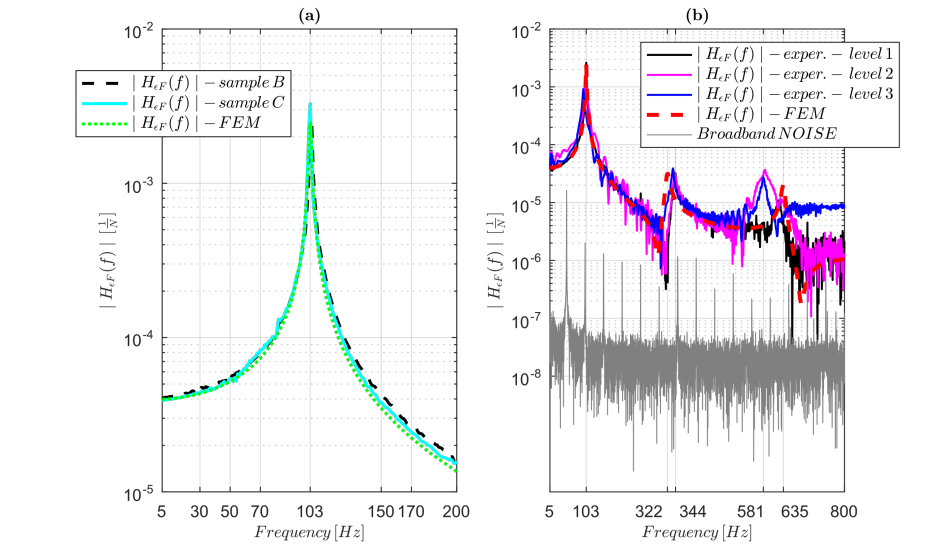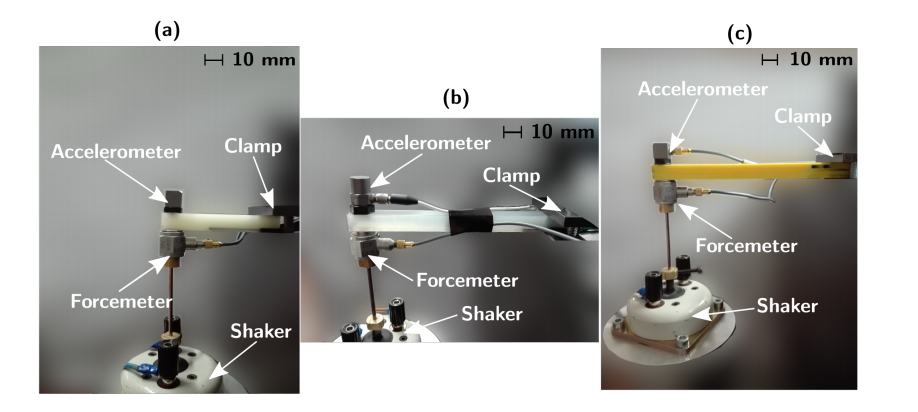Researchers continue to study strain sensors, a growing area of interest as 3D printing and electronics continue to meld and expand, with the need for sensors and monitors in many different applications. The authors outline their findings further in ‘Dynamic Measurements Using FDM 3D Printed Embedded Strain Sensors,’ explaining why sensors are so necessary for technology today such as smart structures.
As ‘intelligent systems’ continue to progress in sophistication, they must be monitored in more sophisticated ways too. The authors are aware that strain sensors are critical for aerospace and medical components—especially when lives could be at stake—and much previous research has been performed by scientists and engineers regarding sensors and applications such as:
- Soft robotics
- Water distribution systems
- 3D printed, bionic ears
- Home healthcare devices
“Strain measurements are essential for monitoring mechanical systems, from both the static and the dynamic points of view,” state the researchers.
They point out, however, that there are limitations in attempting to use FDM 3D printing in the fabrication of sensors—resulting in erratic outcomes with the material, problems with extrusion, and other issues causing defects.
“However, its current and future potential are greater than its drawbacks,” state the researchers, giving mention to the connection between conductivity and piezoresistive response to FDM 3D printed sensors.
Three different samples were created, using an Ultimaker 3 dual extruder, with PLA, tested with a focus on the piezoresistive principle: ‘the capability of an electrically conductive material to change its resistance if a mechanical deformation occurs.’

(A–C) The geometry of Samples A–C: CAD model of the samples and sensors and the 3D-printed manufactured specimens. The non-sensing material is PLA for Samples A–C, even if the colors are different.
Overall, the researchers noted that the sensors created via FDM 3D printing could perform dynamic strain measurements in this study, up to 800 Hz. This was performed with the use of both a high-dynamic-range accelerometer and a numerical model.

Dynamic embedded sensors’ validation, comparing experimental and numerical (FEM model) FRF amplitudes | HeF(f) |: (a) experimental and numerical (FEM) strain FRF amplitudes | HeF(f) | comparing for Samples B and C in the range 5 Hz to 200 Hz; and (b) experimental and numerical strain FRFs (amplitudes) in the range 5 Hz to 800 Hz for Sample C (analogous results for Sample B).
“The theoretical model, validated by experimental data, was used to demonstrate the feasibility of calibrating the integrated strain sensors using quasi-static tests, also taking into account the temperature effects, which were revealed to be Sensors 2019, 19, 2661 13 of 15 negligible in their amplitude (RA) variation. The hypothesis of a zero-order model for the sensors was confirmed up to 800 Hz by the comparison between experimental and numerical FRFs in terms of strain,” concluded the researchers.
“The contribution of electromagnetic interference to the strain noise floor was researched. Although the compensation of electromagnetic noise performed by printing one sensor on the neutral plane of a beam was researched, it was not found to be effective. Additionally, negligible piezoresistive nonlinearities in the quasi-static and dynamic measurements for the 3D-printed sensors were found if the sensor is in the linear-response region of the structure. This work paves the way for new applications of 3D-printed piezoresistive embedded sensors in which dynamic measurements are fundamental.”
Sensors are required for so many different electronic operations today, and with 3D printing, researchers are able to come up with affordable new ways to monitor machinery and other devices, innovating with different strain sensors, embedding them in metal, and even using them in medical applications like prosthetics.
What do you think of this news? Let us know your thoughts! Join the discussion of this and other 3D printing topics at 3DPrintBoard.com.

Cantilever-beam experimental set-up for dynamic measurements: (a) Sample A; (b) Sample B; and (c) Sample C.
Subscribe to Our Email Newsletter
Stay up-to-date on all the latest news from the 3D printing industry and receive information and offers from third party vendors.
You May Also Like
3D Printing Unpeeled: New Arkema Material for HP, Saddle and Macro MEMS
A new Arkema material for MJF is said to reduce costs per part by up to 25% and have an 85% reusability ratio. HP 3D HR PA 12 S has been...
3D Printing News Briefs, January 20, 2024: FDM, LPBF, Underwater 3D Printer, Racing, & More
We’re starting off with a process certification in today’s 3D Printing News Briefs, and then moving on to research about solute trapping, laser powder bed fusion, and then moving on...
3D Printing Webinar and Event Roundup: December 3, 2023
We’ve got plenty of events and webinars coming up for you this week! Quickparts is having a Manufacturing Roadshow, America Makes is holding a Member Town Hall, Stratafest makes two...
Formnext 2023 Day Three: Slam Dunk
I’m high—high on trade show. I’ve met numerous new faces and reconnected with old friends, creating an absolutely wonderful atmosphere. The excitement is palpable over several emerging developments. The high...































